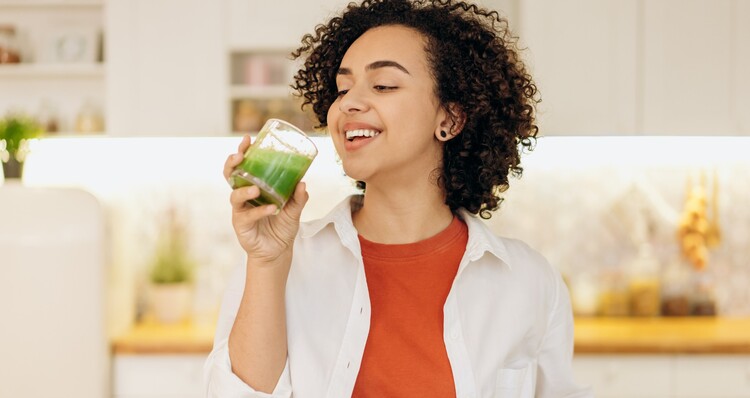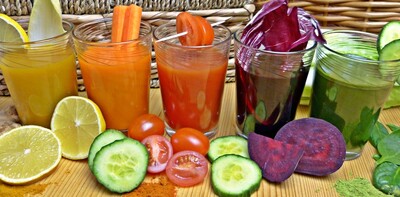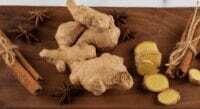
Panchakarma and Ayurveda Detox at Home
By Vaidya Ahana
Detoxification of the body is one of the important approaches mentioned in our Ayurvedic Samhithas. It accentuates the significance of detox and the precise ways to attain it with monitored diet and regimens. Removing toxins and illness from their roots and bringing about an equilibrium in your health are few notions that are explained exclusively. Before we leap into the methods of how detoxification works, let us first understand what an actual detox is.
What is Detox in Ayurveda: Benefits
To detox would mean to get rid of all the unhealthy elements that have been inflicting a state of intoxication to your body through distinct treatments for a particular time, leaving your body rejuvenated and healthy.
Ayurveda beautifully explains a certain way to attain this equilibrium in your health through the concept of tridoshas (Vata, Pitta, and Kapha). Each individual constitution or psycho-somatic temperament is determined by the relative proportions of these three doshas (deha prakriti). A state of imbalance in these three doshas will lead to disease manifestation. The wrong diet, habits, lifestyle, incompatible food combinations (for example: consuming yogurt and meat, milk and fish, melons and grain, etc.), seasonal changes, repressed emotions, and stress factors can function individually or in a collective manner that leads to a breakdown in digestive and metabolic functioning to change the balance of vata, pitta, and kapha.
What is Panchakarma Cleanse according to Ayurveda
Panchakarma is elaborated as the five (pancha) Detoxification Procedures (karma), which are used to clear the body of toxins. It is a perfect science of removing disease through purification and then regeneration.
These five procedures include:
- Vamana (therapeutic vomiting)
- Virechana (therapeutic purging)
- Basti (therapeutic enema)
- Nasya (therapeutic nasal cleaning)
- Raktamoksha (therapeutic bloodletting)
A particular panchakarma method is advised according to the individual's prakruti (tridosha balance maintained in your body) and vikruti (imbalance in your body).
Advantages or Benefits of Panchakarma
- Improves your physical and mental health
- Strengthens your immune system
- Reduces stress levels
- Healthy weight loss
- Slows down aging
- Increases your vitality
- Reduce toxins accumulated in the body from the food we eat, the products we use, and the environment where we live.
- Reduce fat storage and increase energy.
Purvakarma: Pre-purification Measures
To prepare the body and enable it to release toxins more effectively, it is imperative to prepare the body before fasting by eating kitchari. Manda (liquid diet without the solid portion of rice), Peya (liquid diet with some solid portion of rice in it), Vilepi (semisolid diet with an adequate solid portion of cooked rice with a less watery ingredient in it) for three to four days. During fasting, remain in silence and meditate as much as possible as your body needs full rest during this time.
Before embarking on the purification process, the body needs to be fully prepared to release all the toxins. This is achieved by two procedures- Snehana (oleation therapy) and Svedana (sweating or Sudation). Performing Snehana helps in assisting the toxins to move further downwards via the GIT (Gastrointestinal tract) Svedana liquefies the toxins and facilitates the elimination of the same. However, these procedures are not recommended if you are pregnant, anemic, or exhausted.
Primarily you must find out what your Deha Prakruti (tridosha constituency in your body) is, based on that the procedure is initiated. For this, you might have to consult an Ayurvedic physician or will have to do some research.
Once again let me remind you it is essential to keep your body and mind in a state of complete rest during panchakarma. Be gentle on yourself, nature walks, meditate, do yoga, read light books and listen to calm music.
All about Panchakarma: What to eat during Panchakarma, diet after Panchakarma Treatment
Since the global pandemic is still on the rise, consulting an ayurvedic physician would be perilous, hence here is a little guidance on how to detox at home.
To jumpstart any detox, knowing what to avoid is just as important as knowing what to eat. Please be mindful to eliminate alcohol, sugar, soy, gluten, and dairy during this phase as it alters the metabolic conditions and activities like staying up late, sexual intercourse, listening to loud music must be avoided. Adequate water intake is a must since the body is more prone to dehydration. Keep a water bottle beside you at all times, add some lemon in for some better detox effects. Remember, you're doing this to rejuvenate your body, so it is worth the struggle.
Procedure:
Duration of a shorter Panchakarma at home may range between 1-3 days (if you’re working during weekdays) and a longer version can be 4-8 days (take a few extra days off).
Note: Traditional panchakarma lasts for at least 10 to 21 days which needs consistency and commitment which we might be unable to provide with our busy schedules, hence shorter versions with almost the same benefits are advised.
Days 1 to 3
- On days 1 to 3, start with Snehana (oleation therapy). For internal oleation, drink four tablespoons of warm ghee early in the morning. If you are diagnosed with high cholesterol or diabetes, substitute the ghee with two tablespoons of flax seed (recommended to consume this for 3 to 7 days, before your morning meal). These act as lubricants and helps in cleansing the gut and kick starts the detoxification process.
- Eat a diet specific to your dosha (learn more about Dosha specific Ayurvedic Diet here). Drink triphala tea before you go to bed. Mix one teaspoon of Triphala powder with 1/2 a cup of boiling water. Infuse it for 10 minutes. This mild laxative drink will cleanse your digestive tract.
- Eating light food that is easier to digest is recommended while you are doing panchakarma as your agni (digestive fire) becomes less active resulting in slower digestion. On days 4 – 5, eat only kitchari with ghee during the entire period. Drink a tea according to your dosha:
- Vata types can drink ginger, cumin, and coriander tea.
- If you are Pitta, have cumin, coriander, and fennel.
- Kapha types can make themselves a cup of ginger and cinnamon (with a little amount of clove).
To prepare each of these teas, use 1/2 teaspoon of dry powdered herbs and steep them in 1 cup of hot water for 4-6 minutes.
Days 4 - 8
- During the 4th and 5th day, you can begin external oleation early in the morning. Massage your entire body (or seek help from a family member) for 10-15 minutes with warm coconut or sesame oil. After every massage, rest for a bit and take a hot shower or steam bath to sweat out all the toxins. Drink a cup of Triphala tea before you go to bed.
- Between days 6-8– basti or enema. This procedure is to be done after consuming food. To prepare an enema decoction, you’ll need an Ayurvedic formulation called Dashamoola. Boil 1 tablespoon of Dashamoola with 4 cups of water until it becomes 2 cups. Let it cool completely and strain the liquid with a cheesecloth. After administering the enema, hold the fluid for at least 45 minutes before you go to the toilet.
- On the 9th day, you’ll be done with Panchkarama at home. Don’t rush into your old diet. Keep having the kitchari and start having it with steamed veggies. Slowly get back to your dosha-specific diet over the next few days. Apply ghee onto the temples and soles of the feet before bed to calm the mind and promote sound sleep.
If you are not sure about starting panchakarma procedures right away, start off with a basic detox to get an idea as to how a detox works and feels. The best foods to kick-start your detox are:
- fresh fruits
- fresh veggies
- lean animal proteins
- nuts and seeds
- healthy fats- avocados
- Include eggs if you are a non-vegetarian.
In your daily diet start including more of detox food supplements like garlic, moringa, curcumin, hibiscus wheatgrass, artichoke, sauerkraut, and lemon juice with ginger is considered the ultimate liver detoxifier.
Last words and recommendations:
As you begin to wrap up your Panchakarma, take a moment to pause and reflect on how you feel after this cleanse. Provide complete rest to your soul, maintain a journal throughout this process and pen down your feelings and activities that would help maintain consistency, do some yoga and meditate for a few minutes. If your Panchakarma at home is done well, you will feel rested and revitalized. You feel yourself being more self-aware, confident, and blissful, and that’s when you feel the magic of Ayurveda.
Nevertheless, Panchakarma is known for its least side effects, yet it is advised to seek some medical attention with an Ayurveda practitioner.
Note: The information in this article is intended for your educational use only and is not a substitute for professional medical advice, diagnosis, or treatment. Always seek the advice of your physician or other qualified health providers with any questions you may have regarding a medical condition and before undertaking any diet, supplement, fitness, or other health programs.






